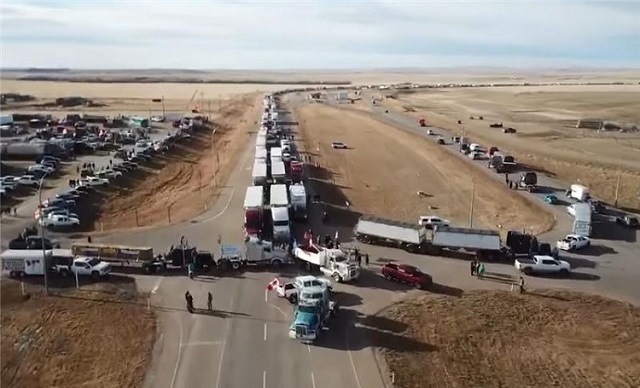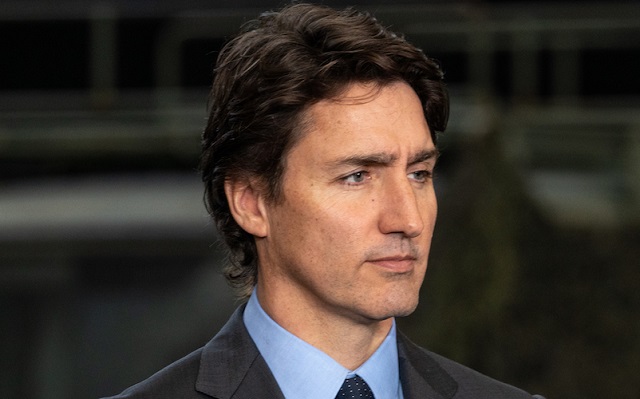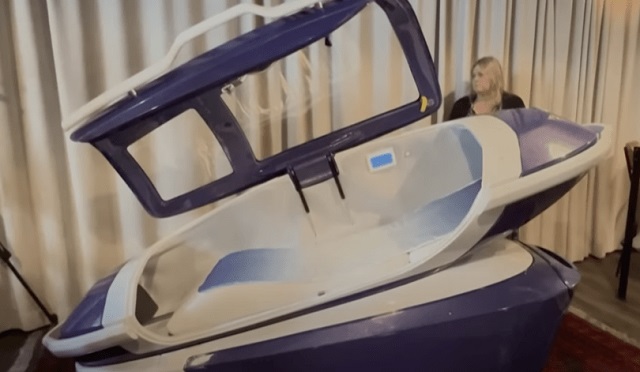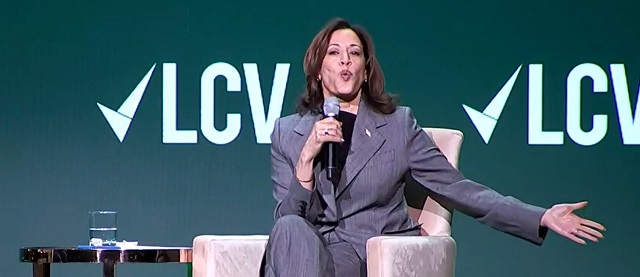Alberta
ASIRT investigations concluded on fatal officer-involved shooting involving the RCMP.

Incident investigation report from the Alberta Serious Incident Response Team (ASIRT)
Introduction
On December 22, 2022, the Alberta Serious Incident Response Team (ASIRT) was directed pursuant to s. 46.1 of the Police Act to investigate a then non-fatal Royal Canadian Mounted Police (RCMP) officer-involved shooting. The shooting of the affected person (AP) was reported to have happened during an interaction with him, as a result of him being a suspect in a complaint of a man with a gun.
While AP initially survived, he died of complications from the shooting the following day.
ASIRT’s Investigation
ASIRT’s investigation was comprehensive and thorough, conducted using current investigative protocols and principles relating to Major Case Management. Information from civilian witnesses, the subject and a witness officers, and importantly video recordings provided sufficient information to determine whether the force used by the subject officer during this incident was reasonable.
Circumstances Surrounding the Officer-Involved Shooting
On December 01, 2022, Maskwacis RCMP received a call reporting that a male [AP] had been drinking and left the caller’s house with a gun. AP was shooting the gun in the country (believed to be the area around the residence). Two RCMP officers responded.
Witness officer (WO) located AP walking on the road with a rifle. AP walked toward WO’s marked police vehicle with the rifle pointed at the vehicle/WO, while WO was seated in the driver’s seat. WO then exited his vehicle with his carbine rifle and moved to the rear of his vehicle while AP kept the rifle pointed at the police vehicle. The subject officer (SO) arrived on scene, but came from the opposite direction. AP turned around and walked toward SO with the barrel of the rifle pointed upwards. SO exited his police vehicle with his service pistol drawn and walked toward AP while he
repeatedly provided verbal direction to AP to drop the firearm. AP and SO were walking toward each other; at that time AP still had the barrel of the rifle pointed upward. As SO and AP got within approximately five meters of each other, AP lowered the barrel of the rifle and pointed it directly at SO. SO fired multiple rounds and struck AP with four rounds causing AP to stumble, drop the rifle and fall to the ground. AP initially survived the shooting and was transported to an Edmonton hospital, where he underwent emergency surgery. The following day, AP succumbed to his injuries.
Analysis
The subject officer was lawfully placed and acting in the execution of his duties in dealing with AP as a person who was the subject of a complaint about him being in possession of a firearm and shooting it off.
The Use of Force
Under s. 25 of the Criminal Code, police officers are permitted to use as much force as is necessary for the execution of their duties. Where this force is intended or is likely to cause death or grievous bodily harm, the officer must believe on reasonable grounds that the force is necessary for the self-preservation of the officer or preservation of anyone under that officer’s protection.
A police officer’s use of force is not to be assessed on a standard of perfection nor using the benefit of hindsight.
With the benefit of hindsight, time for detached reflection and knowledge of the ultimate outcome, it is easy to speculate about how things could have been done differently. That is not the standard, however, against which an officer’s conduct is measured. The question is, applying principles of proportionality, necessity, and reasonableness, whether the force used falls into a range of possible reasonable responses.
Proportionate Response
Proportionality requires balancing a use of force with the action to which it responds. Here, the subject officers were faced with an individual that was armed with a gun and pointing it in their direction. As such, the response by the subject officers in using their respective firearms to shoot AP was proportionate to the threat of death or grievous bodily harm that he reasonably posed to both of them.
Reasonably Necessary
As set out previously in this report, AP presented as a lethal threat to both SO and WO given his actions in pointing his rifle at them. While WO did not shoot during this incident that does not impact the analysis of SO’s actions. Under the circumstances as then faced by SO, no other use of force options were reasonably available for attempted use. The use by SO of his firearm to incapacitate this lethal threat was reasonably necessary. Given the above, the defence available to SO under s. 25 of the Criminal Code would apply.
Conclusion
Under s. 25 of the Criminal Code a police officer is justified in doing what he or she is authorized to do and to use as much force as is reasonably necessary where he or she has reasonable grounds to do so. Force intended to cause death or grievous bodily harm is justified if the officer believes, on reasonable grounds, that the force was necessary to prevent the death or grievous bodily harm of the officer and/or any other person. The analysis under s.34 of the Criminal Code leads to a similar finding that subject officer’s actions were lawfully permitted.
After a thorough, independent and objective investigation into the conduct of the subject officers, it is my opinion that they were lawfully placed and acting properly in the execution of their duties. There is no evidence to support any belief that any officer engaged in any unlawful or unreasonable conduct that would give rise to an offence. The force used was proportionate, necessary and reasonable in all the circumstances.
Alberta
Alberta awash in corporate welfare

From the Fraser Institute
By Matthew Lau
To understand Ottawa’s negative impact on Alberta’s economy and living standards, juxtapose two recent pieces of data.
First, in July the Trudeau government made three separate “economic development” spending announcements in Alberta, totalling more than $80 million and affecting 37 different projects related to the “green economy,” clean technology and agriculture. And second, as noted in a new essay by Fraser Institute senior fellow Kenneth Green, inflation-adjusted business investment (excluding residential structures) in Canada’s extraction sector (mining, quarrying, oil and gas) fell 51.2 per cent from 2014 to 2022.
The productivity gains that raise living standards and improve economic conditions rely on business investment. But business investment in Canada has declined over the past decade and total economic growth per person (inflation-adjusted) from Q3-2015 through to Q1-2024 has been less than 1 per cent versus robust growth of nearly 16 per cent in the United States over the same period.
For Canada’s extraction sector, as Green documents, federal policies—new fuel regulations, extended review processes on major infrastructure projects, an effective ban on oil shipments on British Columbia’s northern coast, a hard greenhouse gas emissions cap targeting oil and gas, and other regulatory initiatives—are largely to blame for the massive decline in investment.
Meanwhile, as Ottawa impedes private investment, its latest bundle of economic development announcements underscores its strategy to have government take the lead in allocating economic resources, whether for infrastructure and public institutions or for corporate welfare to private companies.
Consider these federally-subsidized projects.
A gas cloud imaging company received $4.1 million from taxpayers to expand marketing, operations and product development. The Battery Metals Association of Canada received $850,000 to “support growth of the battery metals sector in Western Canada by enhancing collaboration and education stakeholders.” A food manufacturer in Lethbridge received $5.2 million to increase production of plant-based protein products. Ermineskin Cree Nation received nearly $400,000 for a feasibility study for a new solar farm. The Town of Coronation received almost $900,000 to renovate and retrofit two buildings into a business incubator. The Petroleum Technology Alliance Canada received $400,000 for marketing and other support to help boost clean technology product exports. And so on.
When the Trudeau government announced all this corporate welfare and spending, it naturally claimed it create economic growth and good jobs. But corporate welfare doesn’t create growth and good jobs, it only directs resources (including labour) to subsidized sectors and businesses and away from sectors and businesses that must be more heavily taxed to support the subsidies. The effect of government initiatives that reduce private investment and replace it with government spending is a net economic loss.
As 20th-century business and economics journalist Henry Hazlitt put it, the case for government directing investment (instead of the private sector) relies on politicians and bureaucrats—who did not earn the money and to whom the money does not belong—investing that money wisely and with almost perfect foresight. Of course, that’s preposterous.
Alas, this replacement of private-sector investment with public spending is happening not only in Alberta but across Canada today due to the Trudeau government’s fiscal policies. Lower productivity and lower living standards, the data show, are the unhappy results.
Author:
Alberta
‘Fireworks’ As Defence Opens Case In Coutts Two Trial

From the Frontier Centre for Public Policy
By Ray McGinnis
Anthony Olienick and Chris Carbert are on trial for conspiracy to commit murder and firearms charges in relation to the Coutts Blockade into mid-February 2022. In opening her case before a Lethbridge, AB, jury on July 11, Olienick’s lawyer, Marilyn Burns stated “This is a political, criminal trial that is un Canadian.” She told the jury, “You will be shocked, and at the very least, disappointed with how Canada’s own RCMP conducted themselves during and after the Coutts protest,” as she summarized officers’ testimony during presentation of the Crown’s case. Burns also contended that “the conduct of Alberta’s provincial government and Canada’s federal government are entwined with the RCMP.” The arrests of the Coutts Four on the night of February 13 and noon hour of February 14, were key events in a decision by the Clerk of the Privy Council, Janice Charette, and the National Security Advisor to the Prime Minister, Jody Thomas, to advise Prime Minister Justin Trudeau to invoke the Emergencies Act. Chief Justice Paul Rouleau, in submitting his Public Order Emergency Commission Report to Parliament on February 17, 2023, also cited events at the Coutts Blockade as key to his conclusion that the government was justified in invoking the Emergencies Act.
Justice David Labrenz cautioned attorney Burns regarding her language, after Crown prosecutor Stephen Johnson objected to some of the language in the opening statement of Olienick’s counsel. Futher discussion about the appropriateness of attorney Burns’ statement to the jury is behind a publication ban, as discussions occurred without the jury present.
Justice Labrenz told the jury on July 12, “I would remind you that the presumption of innocence means that both the accused are cloaked with that presumption, unless the Crown proves beyond a reasonable doubt the essential elements of the charge(s).” He further clarified what should result if the jurors were uncertain about which narrative to believe: the account by the Crown, or the account from the accused lawyers. Labrenz stated that such ambivalence must lead to an acquittal; As such a degree of uncertainty regarding which case to trust in does not meet the “beyond a reasonable doubt” threshold for a conviction.”
On July 15, 2024, a Lethbridge jury heard evidence from a former employer of Olienicks’ named Brian Lambert. He stated that he had tasked Olienick run his sandstone quarry and mining business. He was a business partner with Olienick. In that capacity, Olienick made use of what Lambert referred to as “little firecrackers,” to quarry the sandstone and reduce it in size. Reducing the size of the stone renders it manageable to get refined and repurposed so it could be sold to buyers of stone for other uses (building construction, patio stones, etc.) Lambert explained that the “firecrackers” were “explosive devices” packaged within tubing and pipes that could also be used for plumbing. He detailed how “You make them out of ordinary plumbing pipe and use some kind of propellant like shotgun powder…” Lambert explained that the length of the pipe “…depended on how big a hole or how large a piece of stone you were going to crack. The one I saw was about six inches long … maybe an inch in diameter.”
One of Olienick’s charges is “unlawful possession of an explosive device for a dangerous purpose.” The principal evidence offered up by RCMP to the Crown is what the officers depicted as “pipe bombs” which they obtained at the residence of Anthony Olienick in Claresholm, Alberta, about a two-hour drive from Coutts. Officers entered his home after he was arrested the night of February 13, 2022. Lambert’s testimony offers a plausible common use for the “firecrackers” the RCMP referred to as “pipe bombs.” Lambert added, these “firecrackers” have a firecracker fuse, and in the world of “explosive” they are “no big deal.”
Fellow accused, Chris Carbert, is does not face the additional charge of unlawful possession of explosives for a dangerous purpose. This is the first full week of the case for the defence. The trial began on June 6 when the Crown began presenting its case.
Ray McGinnis is a Senior Fellow with the Frontier Centre for Public Policy who recently attended several days of testimony at the Coutts Two trial.
-

 Brownstone Institute2 days ago
Brownstone Institute2 days agoThe Media Refuses to Accept Covid Reality
-

 Alberta1 day ago
Alberta1 day ago‘Fireworks’ As Defence Opens Case In Coutts Two Trial
-

 National2 days ago
National2 days agoLiberals offer no response as Conservative MP calls Trudeau a ‘liar’ for an hour straight
-

 COVID-191 day ago
COVID-191 day agoLeaked documents: German gov’t lied about shots preventing COVID, knew lockdowns did more harm than good
-

 Business1 day ago
Business1 day agoFederal government seems committed to killing investment in Canada
-

 International1 day ago
International1 day agoSwitzerland’s new portable suicide ‘pod’ set to claim its first life ‘soon’
-

 Business1 day ago
Business1 day agoEstonia’s solution to Canada’s stagnating economic growth
-

 Economy1 day ago
Economy1 day agoKamala Harris’ Energy Policy Catalog Is Full Of Whoppers






